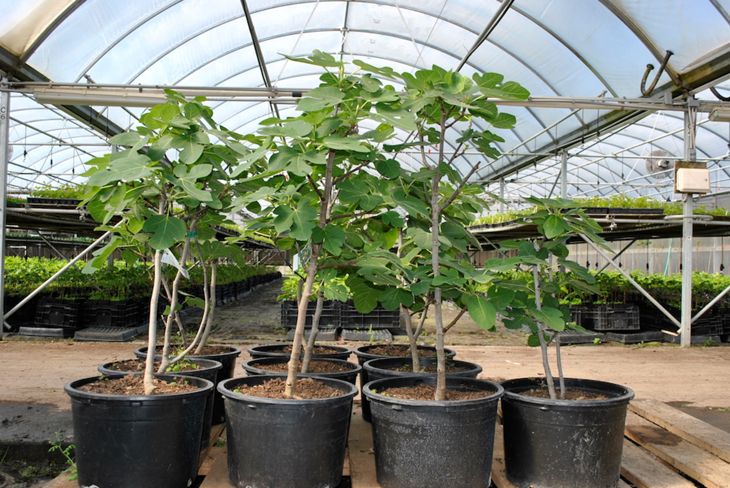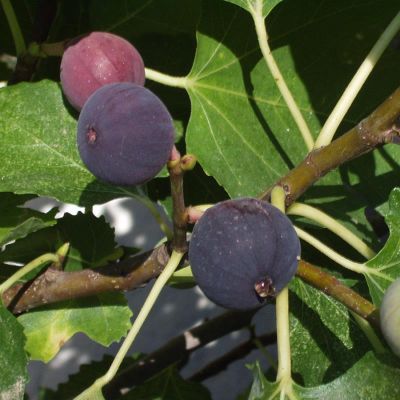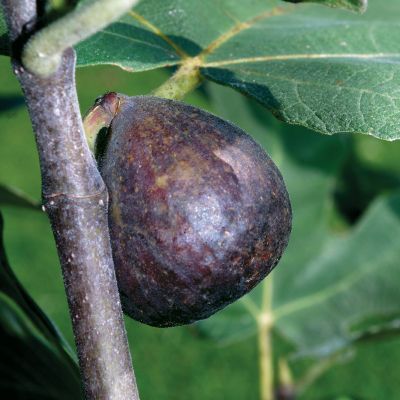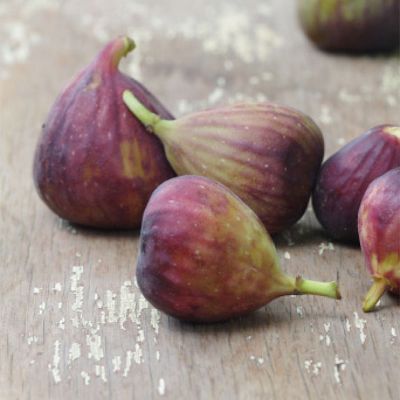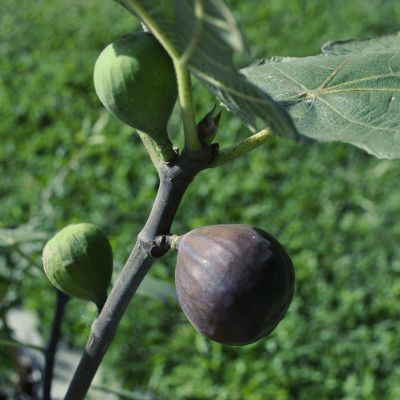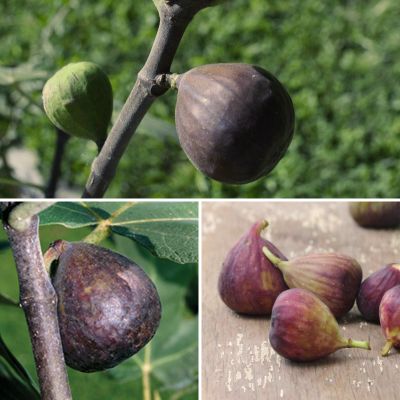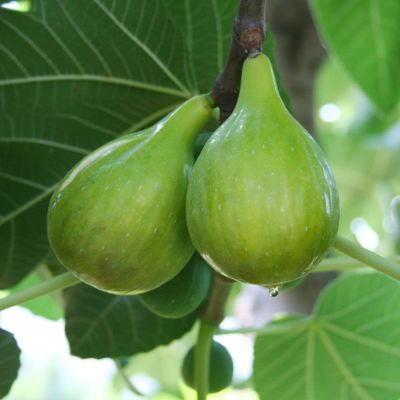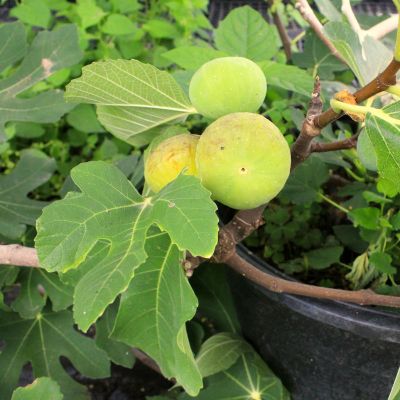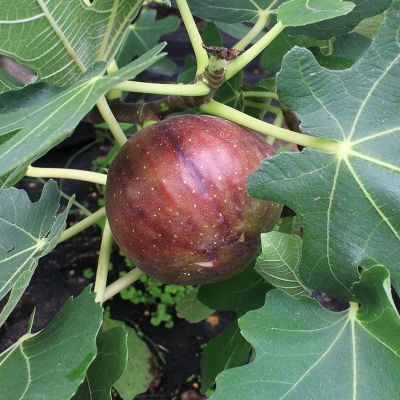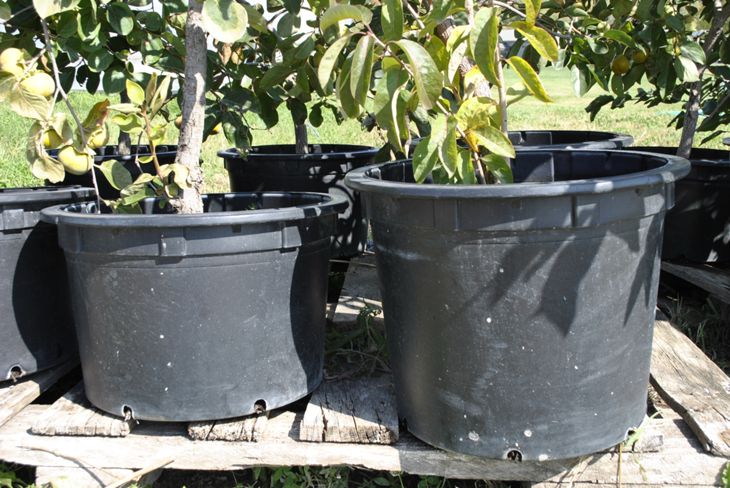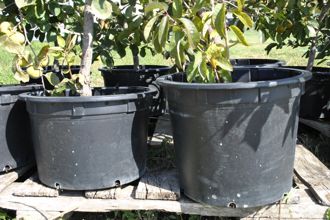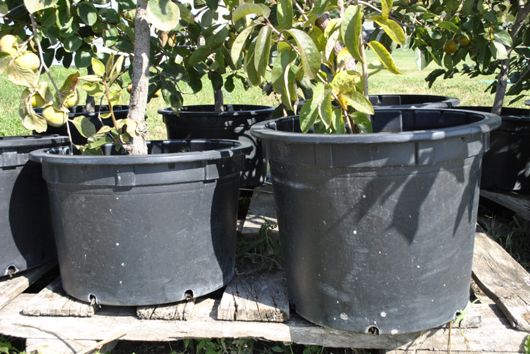Growing Fig Trees in Containers
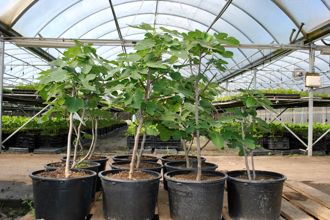
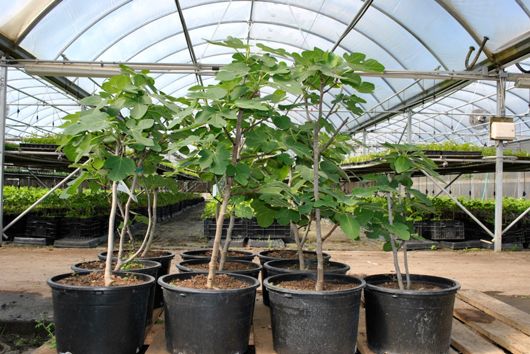
Fresh figs are some of the tastiest and easiest fruits you can grow, and fig trees are incredibly attractive with their uniquely shaped green foliage even when they trees aren't fruiting. Fig trees, when compared to other fruit trees, have one of the shortest wait times before you should expect fruit: usually 1-2 years after planting. However, even with all the perks, fig trees have a reputation in northern gardens (zone 6 and colder) for not being winter-hardy enough to try.
Fortunately, you don't have to struggle and fight with the harsh winter weather when you grow fig trees in containers.
We offer varieties like the Brown Turkey Fig and Chicago Hardy Fig here at Stark Bro’s – fig trees perfectly suitable for container growing. The young trees are shipped in our temporary 4"x4"x10" Stark® EZ Start® pots, and these trees are ready for planting in containers as soon as they arrive. That way, when the nights start getting cold and frost becomes a threat, you can simply move your container-grown fig tree into an unheated area indoors, like a basement, garage, shed, etc.
Planting Fig Trees in Containers
Find the right container:
- The container you use can be made of any material (wood, clay, ceramic, recycled materials, etc.) just be sure there are plenty of drainage holes to let excess water escape.
- Try to avoid heavy decorative pots, since they may be difficult to move once they are filled with soil, water, and a fig tree.
- Don't waste space! Start small and move up to a larger container size as the tree roots fill the current container. For example, you may start out with a 5- or 7-gallon container and move up to a 10-gallon container when the tree's roots fill the previous container size.
- Your tree may eventually end up growing in a container as large as 2.5 feet in diameter, like a half whiskey-barrel, but these are heavy and difficult to move, so make sure you can manage the container size you choose to plant your fig tree in.
For a unique growing experience:
Consider a container on wheels for your mobile convenience! Before putting the tree into the container, place the container on a wheeled plant stand, which can be purchased at almost any garden center, hardware store, or nursery. This will make your life a whole lot easier when you get ready to move the container around for the winter season.
Planting Tips:
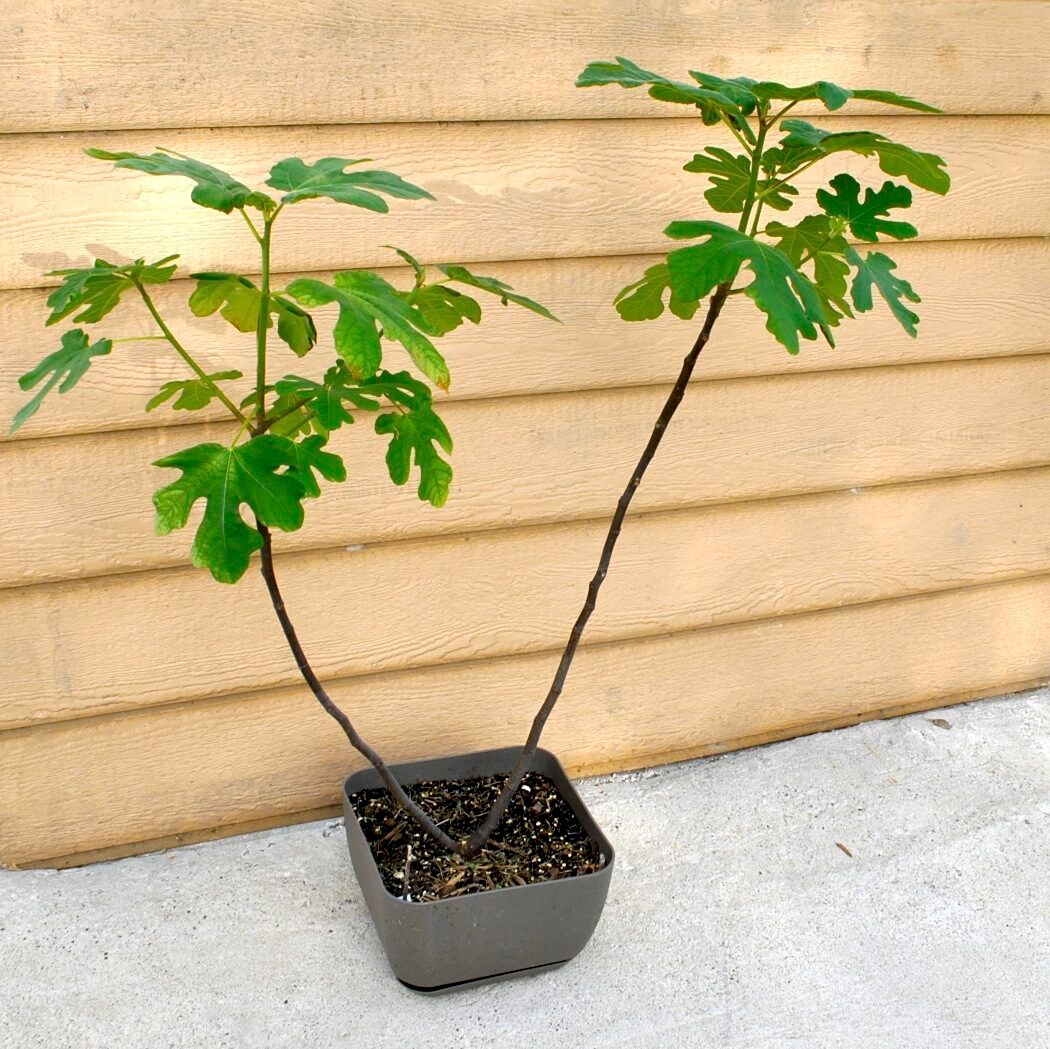
After planting your fig tree in its container, water it well, then add a layer of mulch. The mulch will keep the soil from drying out too quickly. Put the fig tree in a sunny spot in your yard, and keep well watered. During hot summer weather, your fig tree may need more frequent watering, possibly even daily. Observe and respond accordingly to your tree's environment. Note: If your tree's leaves begin to yellow, chances are it is being over-watered.
Pruning your fig tree. Unlike most other fruit trees, fig trees typically don't require routine pruning, but you can prune them to a size that works for your space. Depending on the variety, fig trees naturally mature around 10- to 15-feet tall or larger! Many fig-tree growers find that keeping them between 6-8 feet tall is most manageable, especially in a container environment. Some fig trees have a natural bush-like appearance if allowed to grow naturally. If your fig tree has more of a "bushy" shape and you'd prefer one main trunk, you can prune the additional low growth out until you are left with one main trunk.
In autumn, when the leaves start to turn and fall (ideally before the first killing frost), it is time to move the fig tree to an unheated basement, garage, or shed where the fig tree will go dormant. Check occasionally during the dormant period for soil moisture. Be sure to allow the soil to become dry to the touch 2-3 inches below the soil surface before watering. Dormant roots don't take in much water, but the moist soil keeps the roots from drying out. Avoid drenching or overwatering your dormant fig trees; this will avoid root rot and other water-related issues.
As warmer weather approaches and the days get longer, move the fig tree out to the yard for a few hours every day. This will help acclimate it back to its favored warm weather. Take it back indoors in the evenings. When the last frost date has passed for your area, move the fig tree back to a sunny spot outdoors. In no time, your healthy, vigorous tree will produce sweet and luscious fresh figs for your snacking, cooking, and drying pleasure.
Grow Your Own Fig Trees
Read about growing other types of fruit trees in containers:
- Article Categories:
- How To Grow
- Ideas & Inspiration

